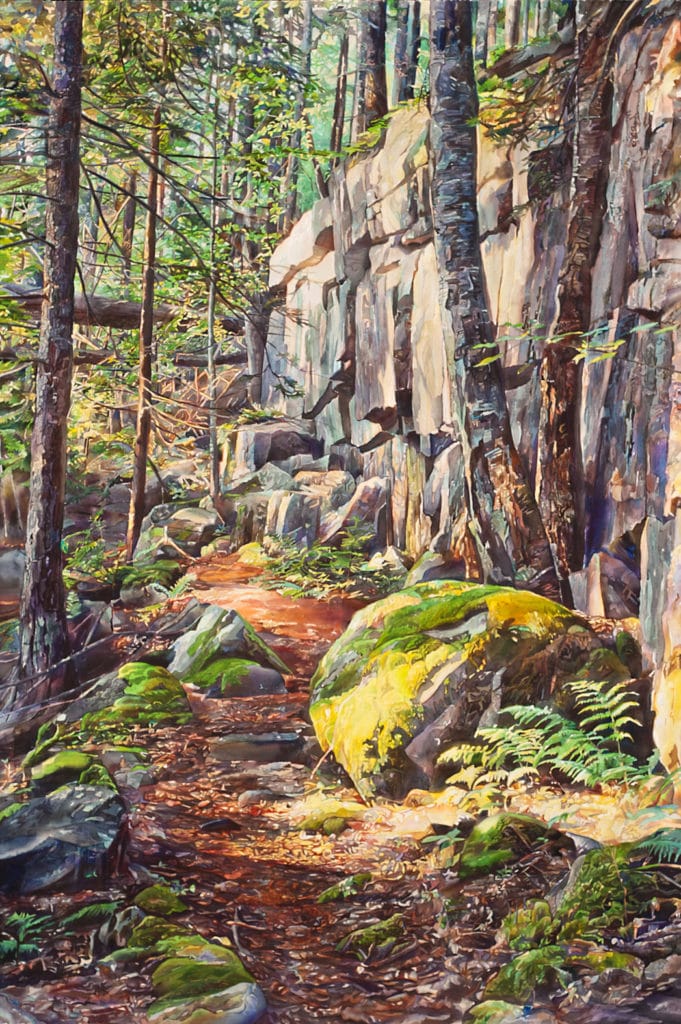
Marjorie Glick’s large-scale watercolor painting Forest, Full Spectrum (watercolor, 40 x 60 in.) took several months to complete. “In a large painting with this level of detail, I felt a bit daunted but also excited because I know at some point in the process, the painting takes on a life of its own,” she says. “I had an idea of how I wanted it to look and feel, but in the end, it became something entirely different, beyond what I could have imagined at the start. It’s painted from a photograph I took over 25 years ago. I didn’t have time to make a sketch at the time so I memorized the colors as best I could and recorded my impressions in my journal: jeweled light; the color of being inside an emerald; dappled, shimmery light; and thousands of hues of peaches, mauves, yellows, and aqua on the rocks. The colors have stayed vivid in my mind for all this time.
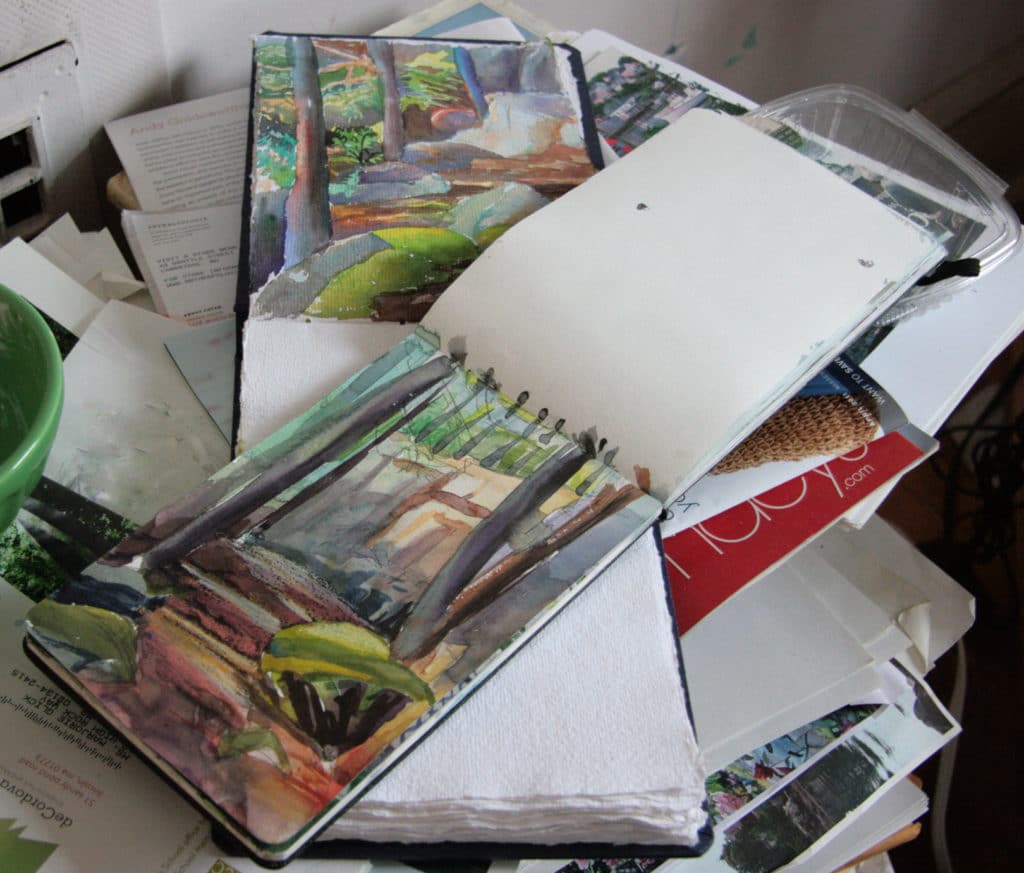
Step 1: “I made numerous reference studies and test swatches to explore color. Each tube of color has a unique quality and I wanted to see what would look best on the painting. I experimented with M.Graham cobalt violet and teal (granular colors) for the rocks. (Pardon the messy studio- I’m too busy painting to clean!)
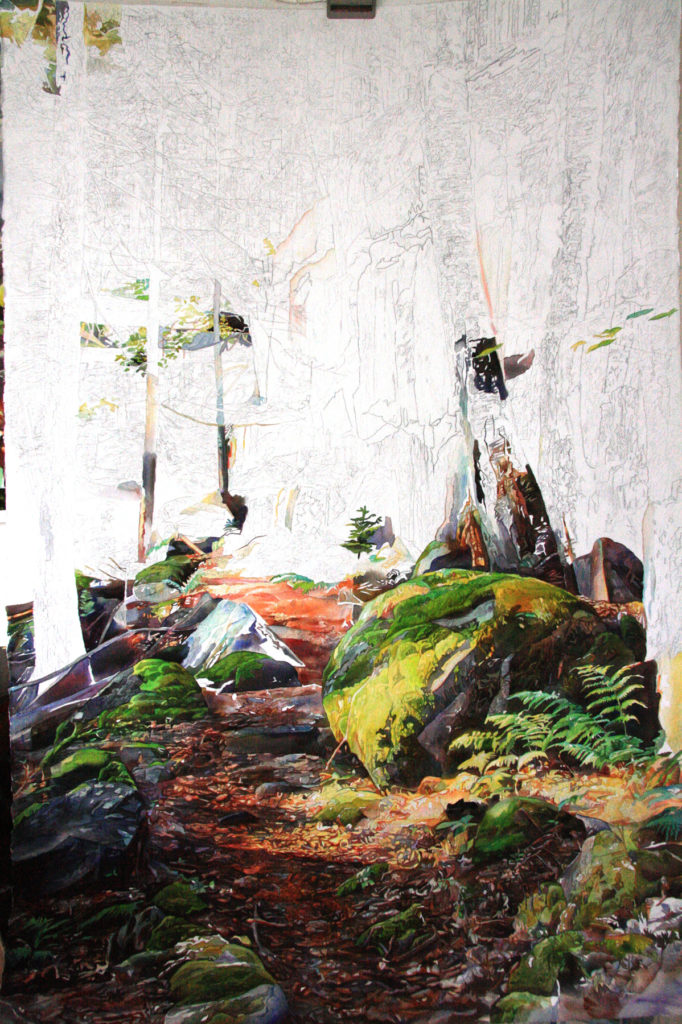
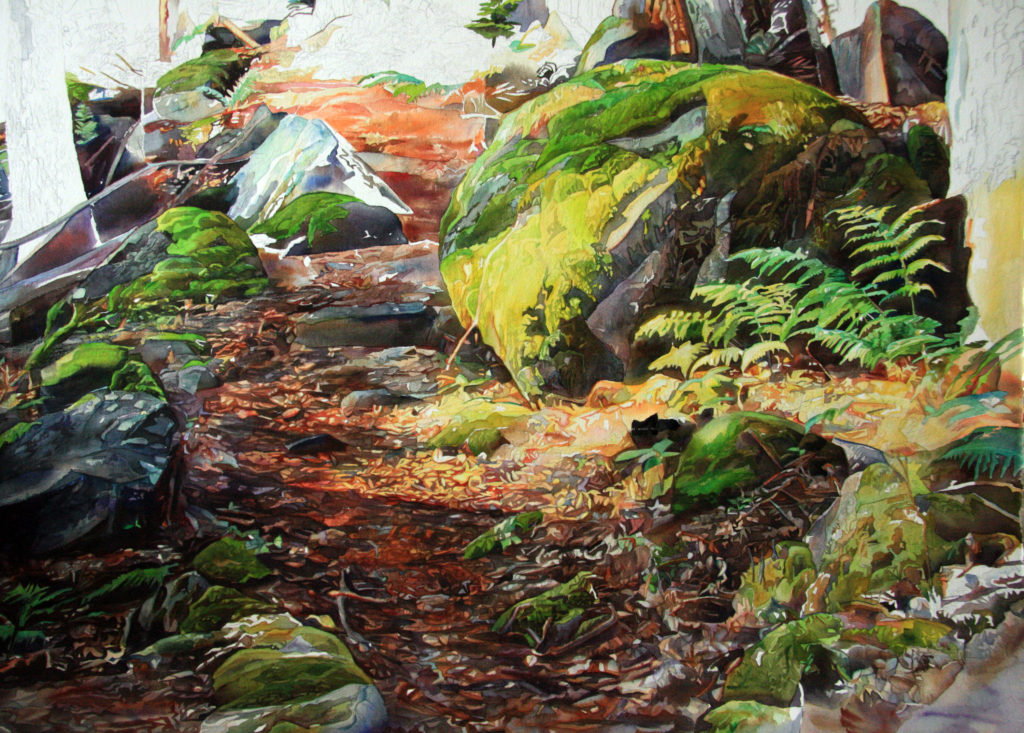
Step 2: “After completing a detailed drawing, I painted the watercolor in sections rather than big washes in order to capture the detail and textures of the rich forest floor, mosses, and rocks. The rock, an integral part of the image, has its first few layers complete. Later in the painting process, I intensified the shadows.
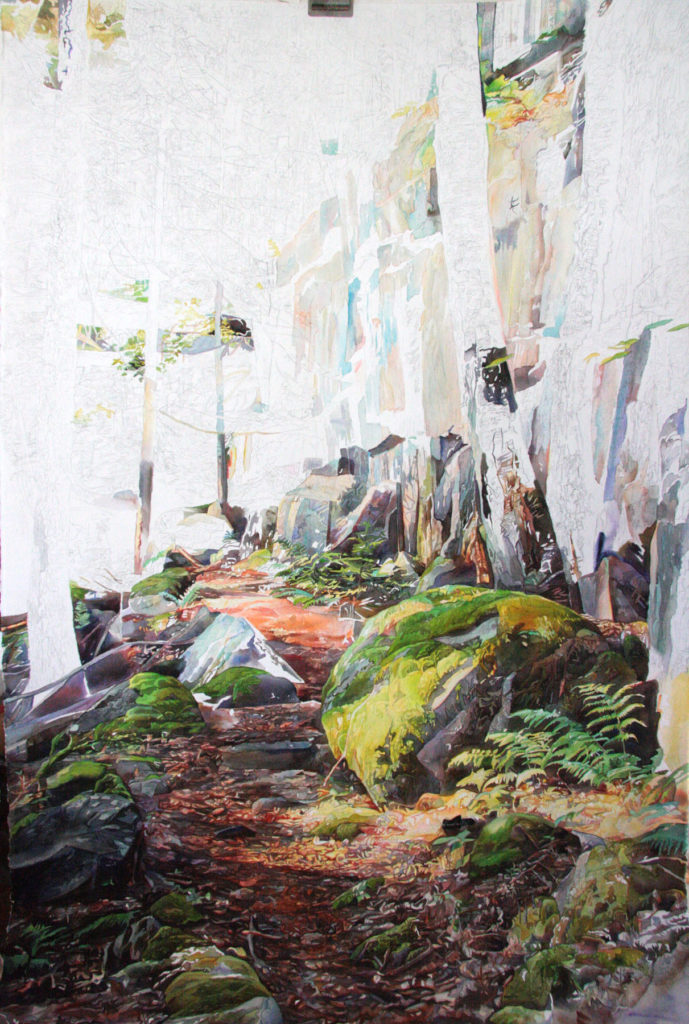
Step 3: “At this point, I began to set in the light tones in the vertical rocks. I began to get an idea of how the overall color scheme would work. Then I stopped for a week and ruminated. When I came back to the painting, I had a clear vision of where I needed to go with the painting. I prize a watercolor for its cleanness and that means that once you alter a light tone from warm to cool, you can never get it back. It was (and is) exciting to work with beautiful colors.
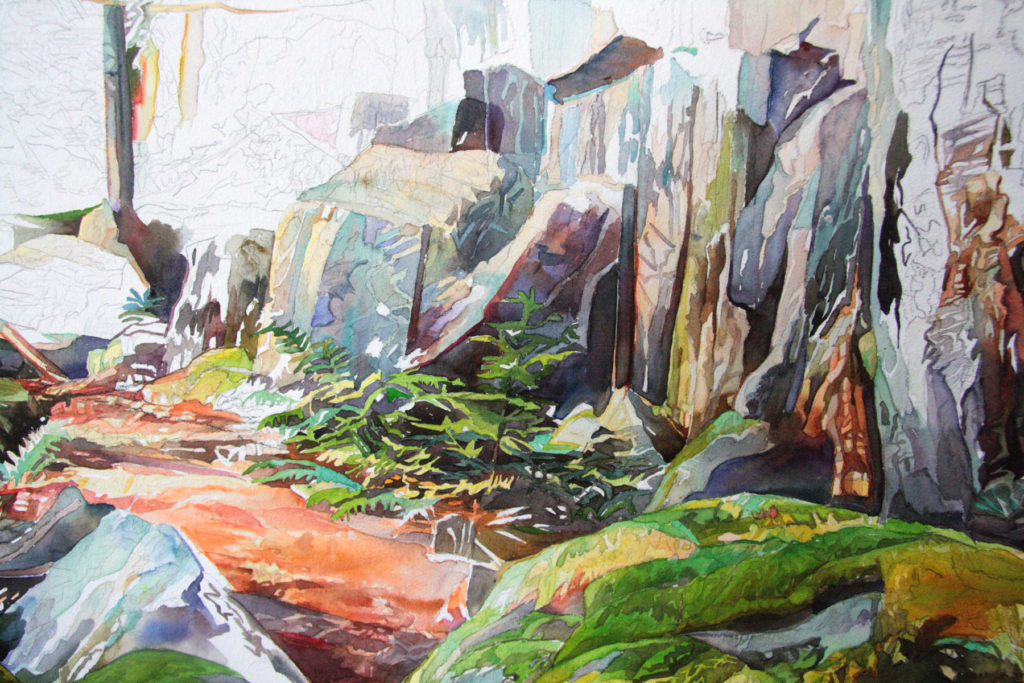
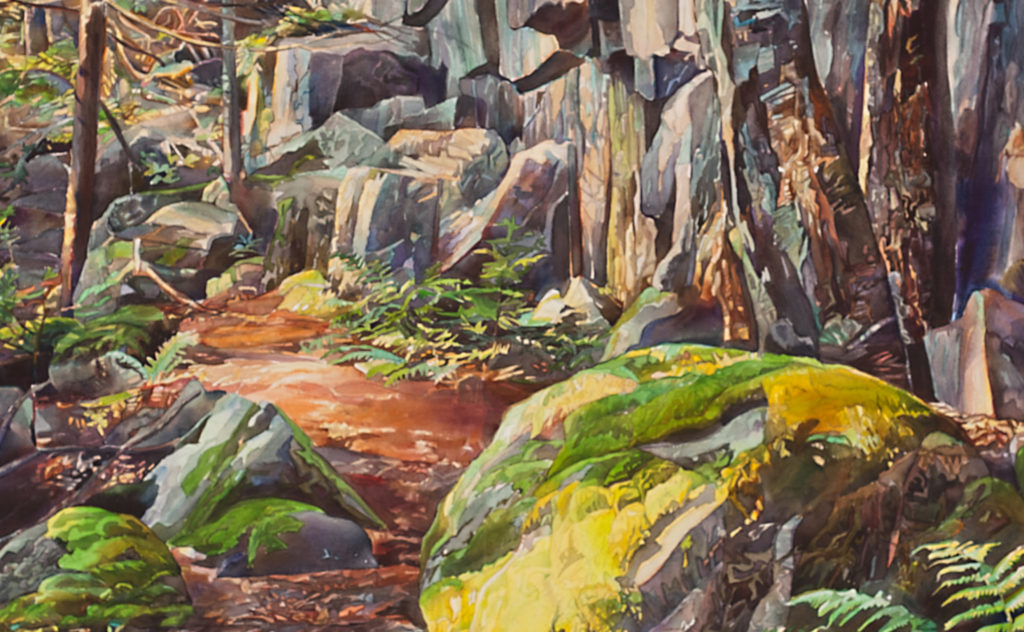
“Gray is my least favorite color. It’s a challenge for me to make it interesting, while still allowing it to serve its purpose of being “quiet” so that the light can be luminous.
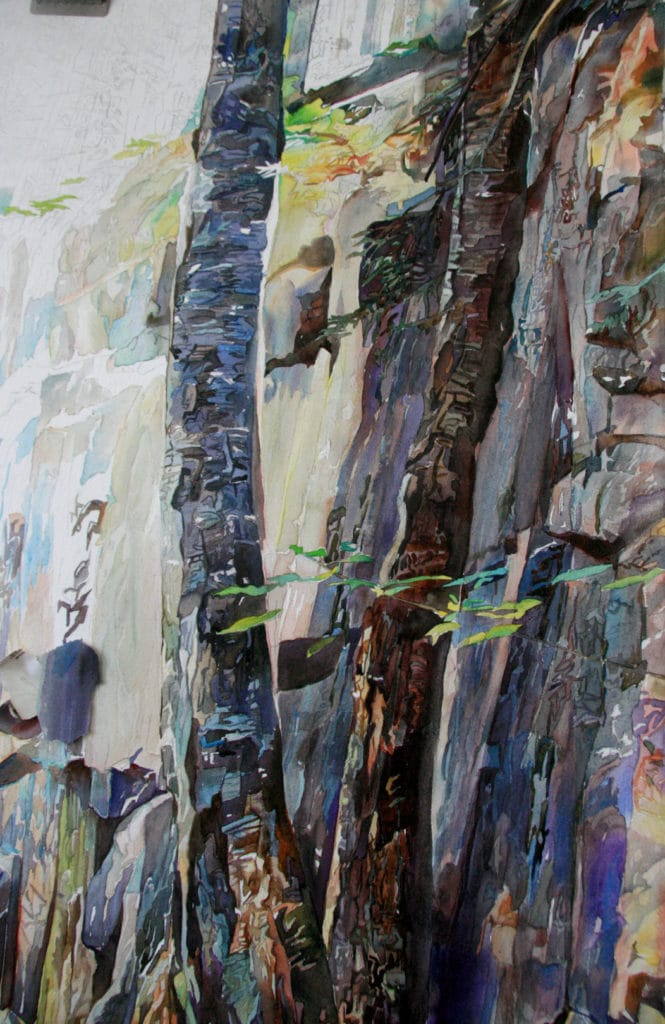
Step 4: “Here, I placed lots of bits of complex color in the shadow area.
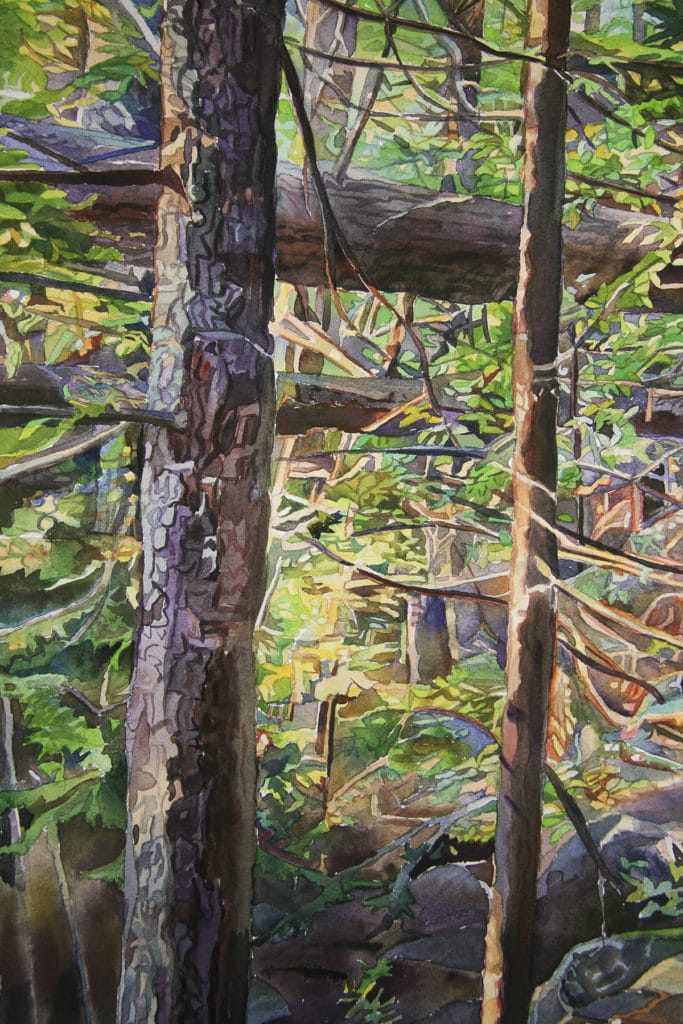
“This part of the painting contains a lot of improvisation. To create a sense of depth, I rendered the space you can see through the trees — something that exists mostly in my memory and not in the reference photo.
Watercolor Tutorial: Creating Depth in Large-Scale Watercolor Paintings
“My paintings always have a great deal of depth. I love the perspective in this piece with the path and rock face converging to a point in the center of the painting, which takes you deep into the forest and up into the tree tops. Being in this forest, in this light, gave me a tremendous sense of well-being. Unfortunately, this place does not exist anymore. Now there are houses and a road.
“One of the things I love about working large is the opportunity for so many colors! One of the corner stones of my work is that I like to capture ‘remembered images.’ This painting embodies that.”
Marjorie Glick is known for her large scale and vivid realism watercolors that are inspired by New England’s places of antiquity and by the beauty found in nature. She has been painting for 30 years and has exhibited at several regional museums and galleries, including the DeCordova Museum, Berkshire Art Museum, Brockton Art Museum, Beth Urdang Gallery, Boston, and the Forum Gallery in New York. She holds a BFA from Massachusetts College of Art and has studied independently with Wolf Kahn and George Nick.
For more inspiring stories like this one, sign up for our free weekly e-newsletter.

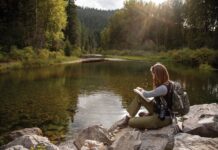

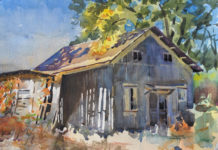




Gorgeous. You effort is rewarded by an excellent work of art. Reminds me of the Allegheny National Forest, in my area. Bravo!
Wonderful writeup on Marjorie Glide. Her journey to re explore the once beautiful forest and recreating that vision is v inspiring.
I absolutely love this step by step guide showing the beautiful layering of color by Marjorie Glick in this gorgeous painting of “remembered images”! Well done! And thank you.
As an ameture watercolor artist, Marjorie gives me and others incentives to reach for more and attain all we can. Thank you !!!
Joe Hren
I am a intermediate watercolour student. My instructor always tells us to start with your background and work forward in your paintings, but I like the way you have brought in the forground first. I find myself doing this more often than not. I seem to get a better perspective on the overall landscape of the painting. And walking away for a few days or a week without looking at the work in progress always helps me “see” more when I come back to it.
I love the richness of this scene and the peaceful anticipation of what I might find just a few steps farther along the path and around the bend. An excellent work . Thank you for explaining your process. Do you have a lesson/ review of how you go about putting/transferring your drawings onto the watercolour paper? I am currently working from several photos I took, combining/ eliminating parts from each to make one floral.